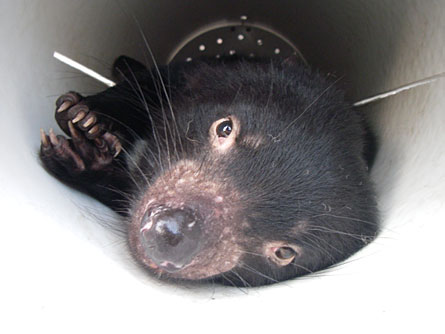- More than 2 years ago
For humans, social networking is all about spreading news via sites like Facebook. But Tasmanian devils’ social networking practices could affect the spread of a deadly and infectious facial tumor.

All the Tasmanian devils in a 25-square-kilometer area of Narawntapu National Park in northern Tasmania belong to the same social group, a new study of the carnivorous marsupials’ social interactions shows. The study, which appears online August 19 in Ecology Letters, was designed to help researchers understand how interactions between normally solitary Tasmanian devils might contribute to the spread of devil facial tumor disease, an infectious cancer transmitted through bites. Devils behave aggressively toward each other and bite during mating and other encounters.
Researchers had expected to find some “superspreaders” of the disease, animals that are more socially connected than others. Identifying such animals could help conservationists design isolation or prevention strategies to limit the spread of the cancer.
Scientists from the University of Tasmania in Hobart fitted 46 wild devils with radio collars that recorded interactions whenever two animals came within biting distance of each other. At the time of the study, in 2006, the animals lived within a tumor-free zone. The researchers, led by Rodrigo Hamede, discovered that all 27 of the devils from which intact collars were recovered belong to a single large social group. Each animal is connected to all the others, either directly or through connections with other animals. The finding suggests that if any one of the animals becomes infected with the facial tumor disease, the cancer would spread to the entire network.
During mating season, most of the interactions recorded were between male and female animals. Outside of mating season, most of the encounters were between females. Males rarely associated with each other, the researchers found.






